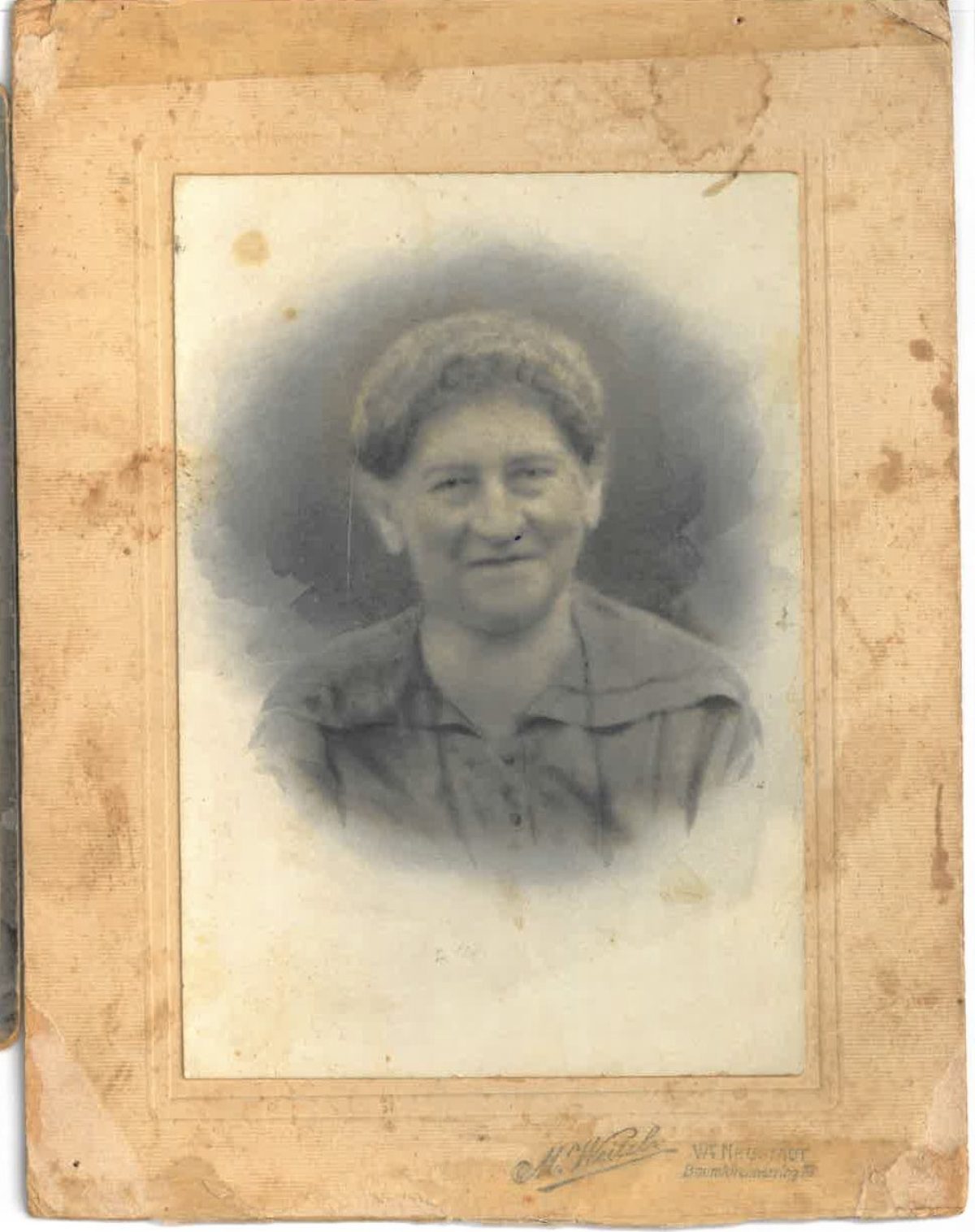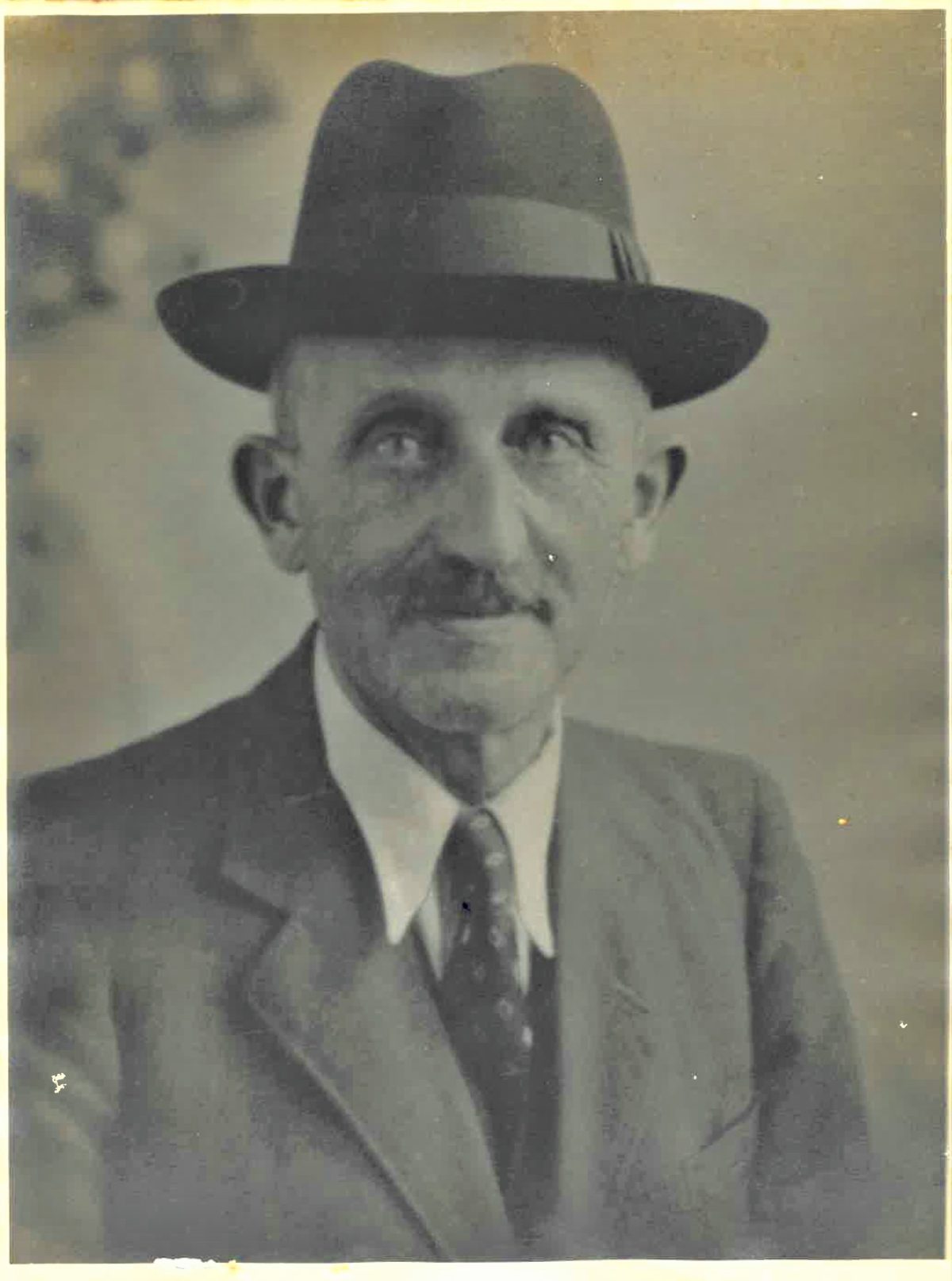Family roots
aus den Aufzeichnungen "Familienwurzeln - Das Haus Blum und das Haus Stössel" von Robert Meir Blum
Das Haus Stössel
LOCKENHAUS
"The history of the Stoessel family in Lockenhaus is no easy task to write about. There are no written documents and verbal reports. I am therefore relying on my memories from my youth and on the gravestone inscriptions which I noted on my last visit to the Lackenbach cemetery, three months ago (ed.note 1989). We know that in the course of more than two centuries, our grandfathers and great-grandfathers found their last rest in this cemetery. Furthermore I assume that after the restoration of the cemetery, which is currently being restored, further interesting family details will be brought to light by means of inscriptions on exposed gravestones. The Stoessel family, coming from Lackenbach must have settled down in Lockenhaus, at the beginning of the nineteenth century. The great-grandfather of today's older generation of the Stoessels was called Mayer Stoessel. He died in 1884. The great-grandmother was called Hendel and died in 1893. A son of theirs was called Mordechai Zvi Stoessel. He was the Grandfather and was born in Lockenhaus. He married in 1870. His wife was called Hadas and was the daughter of Juda Blum from Krumbach. They had the following children: Samuel Eliezer, Gitl, Adolf, Ignatz, Maier, Jultscha and Recha. Mordechai Zvi Stoessel died in 1909 and Hadas Stoessel in 1921. After the children grew up, Samuel Eliezer, Ignatz and Jultscha remained in Lockenhaus. Gitl married in Deutschkreuz (Zelem), Adolf and Recha in the Kobersdorf area and Mayer in Lackenbach."
(Robert Meir Blum mentioned at this point an accompanying family register).
So far as I have investigated the history of the families which left the seven communities of the Burgenland in order to settle down in the neighbouring villages, this was almost always connected with the same attendant phenomena. At the beginning they were travelling tradespeople, with horse-drawn carts but also went about on foot. They sold their goods to the farmers who lived spread wide and far around the village and drove to the annual markets which were held in different places. They often stayed away days on end for there were no motor vehicles. It was not an easy life. They were industrious, they were religious and on account of Kashrut there were naturally major availability problems. How ever after some years, they were sufficiently successful in trade to buy a house in the village where the family lived and even established there a business. Life became much easier and with much perseverance many became prosperous among whom were the Stoessel family in Lockenhaus. They already possessed in the middle of the nineteenth century two houses with large yards in the centre of the village. An indication of the prosperity at the time of Grandfather Mordechai Zvi Stoessel was without doubt the construction of a private synagogue in the yard of one of the houses. This was a very fine Shul for about 80 people with a ladiesgallery. In the same yard there was also a Mikva. Four to five Jewish families lived in Lockenhaus. On the holidays, numerous families which lived in different villages in the surroundings came to the Stoessels at Lockenhaus to pray in the synagogue and participate in all festivities. Minyan was mostly only on the Sabbath in the summer months when numerous Jewish summer guests from Vienna stayed in Lockenhaus.
As in Krumbach, also with the Stossel family in Lockenhaus, a slaughterer was employed whose task it was to slaughter the weekly meat requirement for them and the other Jewish families who lived in the neighbouring villages: He was at the same time leader of prayers and religious teacher. Under his guidance, the children learned a little Judaism. Among this might be understood learning from the Torah, a small part of the weekly Sidra, furthermore Rashi script and Rashij explanations as well also as the observance of the Jewish rite.
What characterised the Stossel family in Lockenhaus in particular, was the fact that they not only engaged in trade but also in farming. At the beginning of the twentieth century they bought significant areas of farming land and worked this intensively.
In the yard there were also stalls for five to six cows and calves, one or two horses ploughed the fields (tractors were not to be had at this time) or were hitched to a small carriage for local travel between the villages in the course of trade. (Buses only travelled on the main road).
When I, as a child, once stayed for the summer holidays in Lockenhaus, I saw with astonishment my cousin Mayer (Maitsch) plough a field. He prepared the field for planting potatoes. This was the first time that I saw with my eyes-·a Jewish farmer. I took part daily in driving the cows to the surrounding hillsides for grazing. The straw and hay were stored as cow fodder for the winter in large barns which were located in the yard. Also there were hens, geese and a large vegetable garden.
I have written about this in detail because Jewish farming in Austria was not an everyday matter. Looking back to the history of the Stossel family in Lockenhaus, this purchase of farming land and its working was a reasonable and advantageous idea.
When in the years between the two World Wars 1918 to 1938, commercial trade fell back significantly, the farming was the basis of the livelihood. The wheatfields provided the bread, the cows gave "Glatt-Kosher" milk and homemade butter and cheese was put on the table. The meat requirement was covered. Eggs and vegetables there were in full.
In the thirties (1934) the darkening anti-Jewish storm clouds were already showing clearly in the political firmament of Austria. It is today a historical fact that no Jews, not even the major personalities among them, who were present in all branches of public life in Austria, whether art, science, trade or industry, even only approximately know of the magnitude of the misfortune which was to befall Austrian Jewry and that a serious warning had been given. Even the Zionist-Organisations which were significant in Austria proved no exception.
When Hitler marched into Austria on 12th March 1938, the first victims were the Jews who lived in the villages. The Stossel families had to leave house and home without anything and were expelled to Vienna. A part of the family unfortunately perished in the German concentration camps in Poland. The majority got together again in the course of the years in Israel established themselves there again and the young people founded new families. A small family branch lives in London, another in Montreal, Canada. The accompanying family register tells about it. (note: R.M. Blum added a family register to his text)
CONCLUSION
I believe that I might not have said everything if I would not have expressed my best thanks to our cousin Fritz Blum in Montreal for the supply of numerous documents concerning the family register, as well as different details about the Krumbach family history. Finally, I would still like to add the following: Should it appear that I have brought back to the reader of my text forgotten facts, or through new facts I have enriched his knowledge; if my composition which I will translate into Hebrew for today's schoolchildren of the younger family generation for their homework on the theme of family roots - "Schoraschim", then I think myself satisfied that this work was worth all the trouble.
Robert Meir Blum, Kiryat Motzkin, 1.1.1990
Translated into English: Warren Silverman, London 20.6.1995



Escaped and survived.
With the help of her employer in England - he becomes her husband later- Janka Stössel (born 1914 in Lockenhaus, died 2012 in England) was able to save part of her family.
Her parents Nathan Ignatz Stössel (born 1878 in Lockenhaus, died 1941 in England) and Gittl/Käthe Stössel (born Blum 1887 in Krumbach, died 1959 in England) and her siblings Judith (born 1917, died 2009), Mosche (born 1919, died 1983), Romi-Avraham (born 1923, died 1999) and Schmuel (born 1921, died 1979) survived the Shoa by a saving transport to England. Two other siblings, Max (born 1913) and Roschi (born 1925) could escape to Israel. Many descendants - children, grandchildren and great-grandchildren - now live in Israel, England, America and Canada.
Two daughters from other branches of the Stössel families in Lockenhaus survived. They filled out memorial sheets in Yad Vashem.
Page of Testimony for the parents Emanuel Stössel and Valerie Stössel (née Breuer)
Page of Testimony for the mother Berta Stössel (née Blum)
Page of Testimony for the brother Maier Maitsch Stössel
The son of Recha Deutsch (née Stössel, an aunt of Janka) also filled out a memorial page in Yad Vashem.
Page of Testimony for the mother Recha Deutsch (née Stössel)
A grandson of Emanuel Stössel, who lives in America, commemorates his grandfather, who was born in Lockenhaus, with a memorial page in Yad Vashem.
Page of Testimony for the grandfather Emanuel Stössel
Ludwig Stössel, the stage- and film actor, escaped from Austria in 1938. He had no children, he died in 1973.